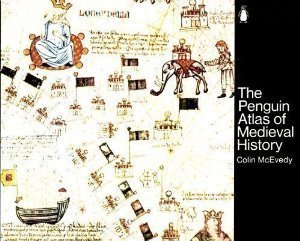What do you think?
Rate this book


Paperback
First published January 1, 1961
Footnote 2. Timur was a devout Muslim, and it is ironic that few of his blows landed on the enemies of his faith. The best he could do was ransack Georgia every time he passed by, which was often enough to make Georgia a pretty miserable place..."
Henry V, who became King of England in 1413, decided to put an end to the quarrel between the English and French crowns by making himself King of France too. Circumstances favored his cause. The reigning King of France was a lunatic, the Duke of Burgundy open-minded about his loyalties, and the French nobility as confused as ever about the difference between tournaments and tactics."
The Council met at Pisa in 1409, where it declared both existing Popes deposed and elected a new one of its own. However, as it lacked the means to make its depositions effective, the end result was simply three Popes instead of two. A new Council meeting at Constance ... did better. One Pope abdicated voluntarily, another withdrew to Spain, where his support gradually ebbed away, while the third was forced to stand down after a trial that left many puzzled as to how he had become Pope in the first place.(1) The way was clear for the selection of a new pontiff who could end the confusion as to who was Pope and where he was to be found.
(1) This was the John XXIII of whose trial before the Council Gibbon wrote: 'the most scandalous charges were suppressed, the vicar of Christ was only accused of piracy, rape, sodomy and incest'.